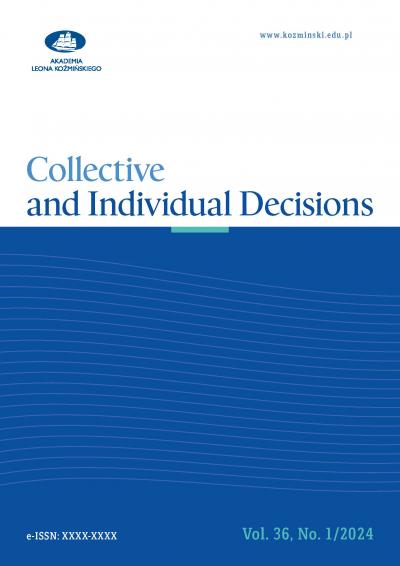Co decyduje o gotowości do podejmowania działań zapobiegawczych na obszarach zagrożonych powtarzającymi się powodziami?
Tadeusz Tyszka
Kozminski University
Roman Konieczny
Institute of Meteorology and Water Management
06/16 (25) Decyzje
DOI 10.7206/DEC.1733-0092.68








